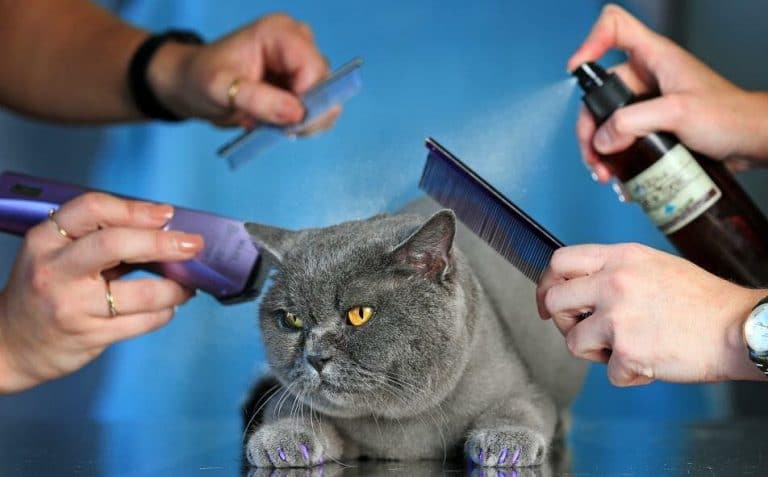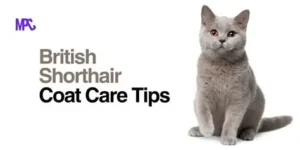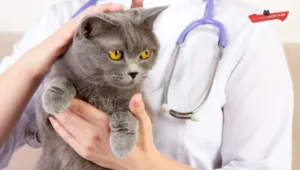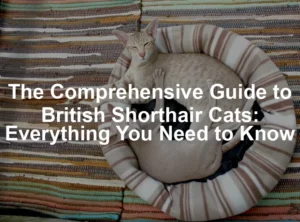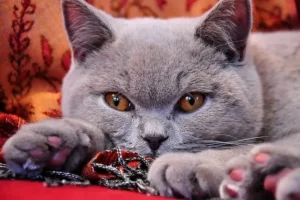The British Shorthair kitten is known for its charming round face, stocky body, and short, plush coat. These kittens are not only adorable but are also relatively low-maintenance when it comes to grooming. However, to ensure your British Shorthair remains healthy, comfortable, and looking its best, proper grooming is essential. Understanding their grooming needs is key to keeping your kitten happy and healthy.
In this blog post, we’ll discuss the grooming requirements of British Shorthair kittens, including coat care, nail trimming, ear cleaning, and more. Whether you’re a first-time kitten owner or an experienced cat parent, this guide will help you understand what your British Shorthair needs to look and feel great.
1. Coat Care: Short and Plush, But Still Needs Attention
While British Shorthair kittens have short coats, their fur is thick and plush. This means they will still shed, though not as much as long-haired breeds. Regular brushing is necessary to keep their coat in good condition and minimize shedding. Here’s what you need to know:
A. Brushing Frequency
- Once a week is usually sufficient for a British Shorthair kitten. Regular brushing will help reduce shedding and prevent mats, especially around the neck and under the arms, where the coat can get tangled.
- Use a soft-bristle brush or a grooming mitt to gently remove loose fur. This also helps distribute natural oils through their coat, keeping it shiny and healthy.
B. Deshedding Tools
- While British Shorthairs don’t shed as much as long-haired breeds, you may want to use a deshedding brush (like a Furminator) during heavy shedding seasons (spring and fall).
- Tip: British Shorthairs are known for their “teddy bear” appearance, so keeping their coat healthy is essential to maintaining their iconic look.
C. Bathing
- Bathing a British Shorthair kitten is generally not necessary unless the kitten gets particularly dirty or has skin issues. If you choose to bathe your kitten, use a gentle kitten-safe shampoo and ensure the water is lukewarm. Bathing should be done sparingly to avoid drying out their skin.
2. Nail Trimming: Essential for Healthy Paws
Regular nail trimming is an important part of your British Shorthair kitten’s grooming routine. Like all cats, kittens’ claws grow quickly, and without regular maintenance, they can become too long and cause discomfort or even injury.
A. How Often Should You Trim Their Nails?
- Ideally, you should trim your kitten’s nails every 2-4 weeks, depending on their activity level. Cats who climb or scratch often will naturally wear their nails down, but if your kitten is mostly indoors, you may need to trim more frequently.
- Use a proper cat nail clipper to avoid causing harm to your kitten’s sensitive paws. Be careful not to cut into the quick, the pink area inside the nail, which can cause bleeding.
B. Desensitize Your Kitten Early
- Get your British Shorthair kitten used to having its paws handled at an early age. This makes nail trimming less stressful for both you and the kitten.
- Gently massage their paws and reward them with treats to create a positive association with the process.
3. Ear Care: Preventing Wax Build-up and Infections
British Shorthair kittens generally have healthy ears, but it’s important to check them regularly for any signs of infection or excess wax buildup. Here’s what you should do:
A. Cleaning Your Kitten’s Ears
- Clean your kitten’s ears with a moist cotton ball or kitten-safe ear cleaning solution. Never insert anything into the ear canal, as it could cause injury.
- Check weekly for any signs of infection, such as redness, swelling, or a foul odor. If you notice any of these, contact your vet for advice.
B. Preventing Ear Infections
- Keep your kitten’s ears dry, especially if they have been exposed to water (like during a bath or playtime in a wet area). Moisture can lead to ear infections, which are uncomfortable for your kitten.
4. Eye Care: Keep Their Eyes Clear and Healthy
British Shorthair kittens are prone to mild eye discharge, especially when they are younger. Regular eye care is necessary to keep their eyes clean and free from irritants.
A. Cleaning Eye Discharge
- Use a soft, damp cloth to gently wipe away any eye discharge. Be careful not to rub too hard, as the area around the eyes is sensitive.
- If you notice persistent or excessive discharge, it could be a sign of an underlying health issue like conjunctivitis, in which case, you should consult your vet.
B. Regular Monitoring
- Regularly check for any signs of redness, swelling, or excessive watering, as these can be signs of an infection or other eye problems that may require professional care.
5. Dental Care: Maintaining Healthy Teeth and Gums
Dental hygiene is just as important for British Shorthair kittens as it is for humans. It’s essential to start a dental care routine early to prevent future problems like gingivitis or dental decay.
A. Brushing Their Teeth
- Start brushing your kitten’s teeth as early as possible using a kitten-specific toothbrush and pet-safe toothpaste.
- Brush their teeth at least 2-3 times a week to prevent plaque buildup.
B. Dental Chews and Toys
- You can also provide dental toys or chews that are designed to help clean your kitten’s teeth as they play. These can be particularly helpful for encouraging oral hygiene without the need for daily brushing.
6. Grooming for British Shorthair Kittens: A Quick Checklist
- Brushing: Once a week, use a soft-bristle brush to remove loose fur.
- Nail Trimming: Every 2-4 weeks, trim nails using a cat nail clipper.
- Ear Cleaning: Check and clean ears weekly with a damp cotton ball or ear cleaning solution.
- Eye Care: Wipe away any eye discharge with a damp cloth as needed.
- Dental Care: Brush their teeth 2-3 times a week and provide dental toys.
FAQ: Grooming Needs of a British Shorthair Kitten
Q: Do British Shorthair kittens shed a lot?
While British Shorthairs have short, plush coats, they do shed. Regular brushing helps manage shedding and keeps their coat healthy. Expect a moderate amount of shedding, particularly during seasonal changes.
Q: How do I clean my British Shorthair kitten’s ears?
Use a kitten-safe ear cleaning solution and a soft cotton ball to gently clean the outer ear. Never insert anything into the ear canal. Check for signs of infection, such as redness or odor.
Q: How often should I bathe my British Shorthair kitten?
Bathing is generally not necessary for British Shorthair kittens unless they get particularly dirty or have skin issues. If you do need to bathe them, use a gentle, kitten-safe shampoo and ensure the water is lukewarm.
Q: How can I prevent my British Shorthair from scratching furniture?
Provide scratching posts or pads made from sisal or cardboard. Praise and reward your kitten when they use the scratching post, and consider using cat deterrent sprays on furniture to discourage unwanted scratching.
Q: Can I trim my British Shorthair kitten’s nails myself?
Yes! With the right tools (a cat nail clipper) and a little practice, you can trim your kitten’s nails at home. Trim them every 2-4 weeks and be sure to avoid cutting the quick, which is the sensitive pink part inside the nail.
SEO Entity and Keyword Mapping for GEO and AEO Optimization
For gatobritánicofarm.com to rank effectively, integrating GEO (Geographical) and AEO (Audience) keywords will ensure better search engine visibility and relevance. Here’s how to structure your keywords:
GEO Keywords (Location-Specific)
- Grooming needs of British Shorthair kittens in [City/Region]
- British Shorthair kitten grooming tips near me in [Location]
- Best grooming services for British Shorthair kittens in [Region]
- Find British Shorthair kitten groomers in [City]
- Kitten grooming for British Shorthairs in [Location]
AEO Keywords (Audience-Specific)
- How to groom your British Shorthair kitten at home
- Best grooming tips for British Shorthair kittens
- Grooming essentials for British Shorthair kittens
- British Shorthair kitten care and grooming
- How often should I brush my British Shorthair kitten?
